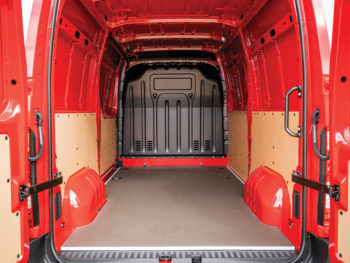Fleets adopting electric vehicles need to ensure the vehicles are fully equipped for their needs to maximise the return on investment.

While new vehicles offer big opportunities to maximise payload efficiency and optimise operations, they must meet specific business needs to cut the time taken for return on investment, according to Venson Automotive Solutions.
And that’s particularly the case with the switch to electric vans, which come with a higher price tag but can cut operational costs significantly when used right.
Alison Bell, operations director at fleet management and funding specialist Venson, said: “When fitting out a commercial fleet there is always a careful balancing act to play between maximising efficiency and keeping a watchful eye on total cost of ownership (TCO). That’s why it’s so important to choose an LCV fleet supplier who can advise on how to get the right conversion and fittings, such as external roof systems and internal storage, ventilation and security, to ensure the most appropriate layout for the vehicle, which in turn, will deliver operational cost savings.”
In particular, Venson says operators should get relevant stakeholders’ input into the conversion requirements.
“So, selecting an LCV supplier who will take time out to listen carefully and understand the job required of the vehicle means a conversion that will ensure employees will get their work done efficiently and safely, while at the same time helping the business control its operational costs.”
Venson also warns that vehicle modifications also need to be considered from the perspective of TCO – both for ICE and electric vans – and advises operators to consider the extra weight of certain fittings and ask themselves if they are ‘nice to have’ or essential.
Bell summed up: “It may not be front-of-mind when acquiring a new van, but businesses should always consider what will happen to the fit-out at the end of the contract. Can it be reused? Are there any additional costs that might be incurred in transferring the equipment to a different vehicle? It’s fantastic to see that commercial fleets are switching to zero- and lower-emission vehicles, but consideration must be made before purchase of the day-to-day needs of these vehicles and the de-fleeting process to maximise resale values.”
Venson’s top tips for choosing a commercial vehicle conversion supplier
- Fit for purpose? – Consider what the vehicle is being used for, perhaps using a pick-up instead of a van means the driver can get closer to where the work needs to be carried out.
- Plan Ahead – Anticipate the reuse of racking and other equipment to work out your lifetime costs for the conversion.
- Cost savings – Running correctly specified vehicles is critical to the efficiency and productivity of the business. The right conversion ensures the best layout delivering operational savings.
- Customised racking – A provider that can design the maximum storage capacity will save money and time. It will also provide the opportunity to understand whether there’s an opportunity to downsize the vehicle.
- Turnkey solutions – Can lead to more efficient handovers and finance process.
- Key-for-key handovers – A supplier that can provide a one-stop-shop speeds up the time from vehicle order to in-service which helps support minimising fleet downtimes.
- Reuse – You can expect to get up to 10 years of use from some equipment. Consider equipment lifecycles when specifying conversion requirements and selecting new vehicle models.
- Understand transfer costs – If you are intending to transfer equipment from one vehicle to another, understand the cost implications including repairs and refurbishments.
- Payload – Productivity and the impact on the vehicle’s performance should be a key consideration when determining equipment specification.
- DIY racking risks – Don’t try cutting costs and let a skilled workforce build their own racking to save money. This can prove costly and unproductive and can lead to health, safety and duty of care issues.

